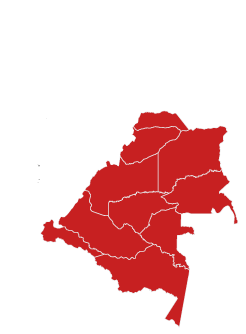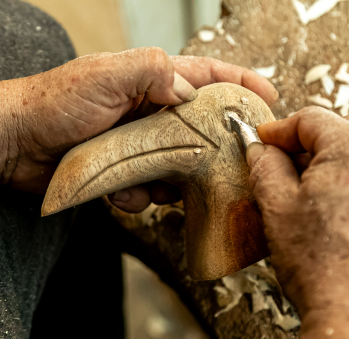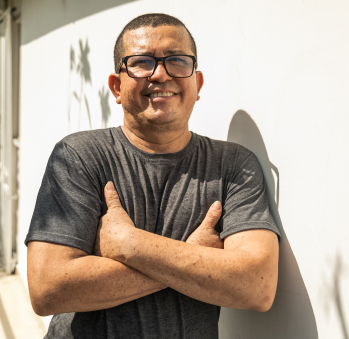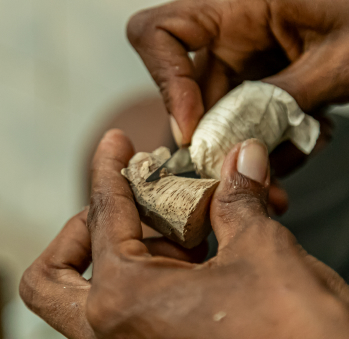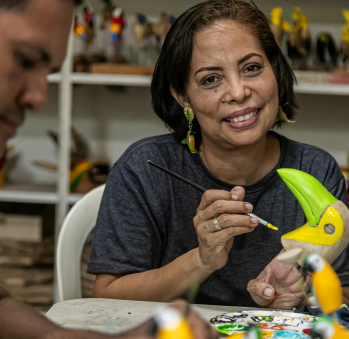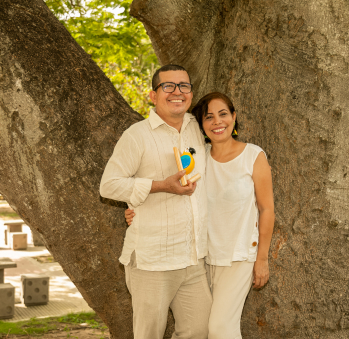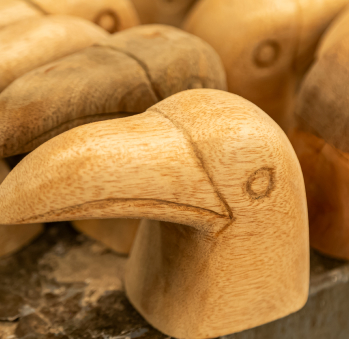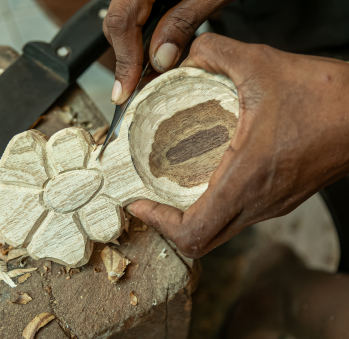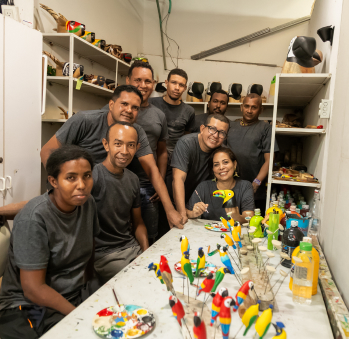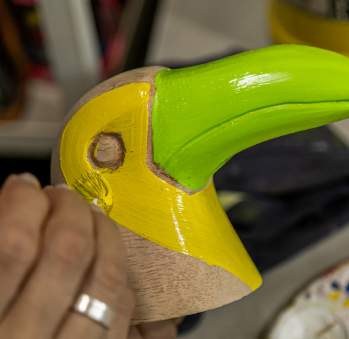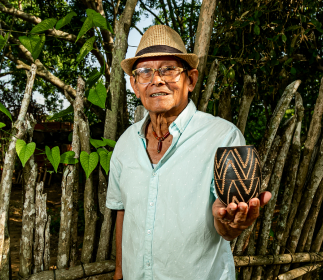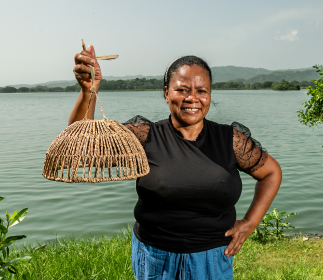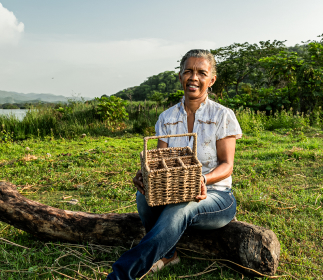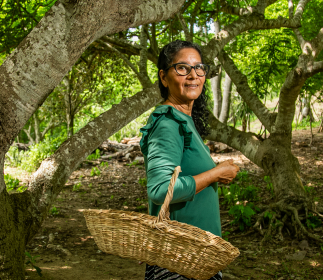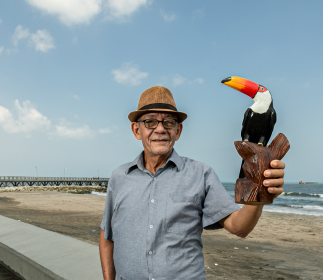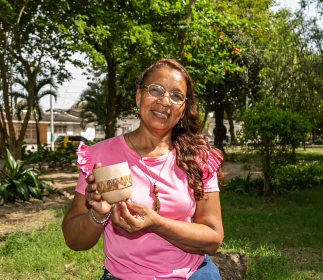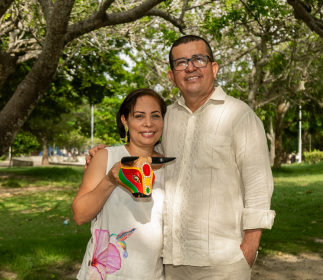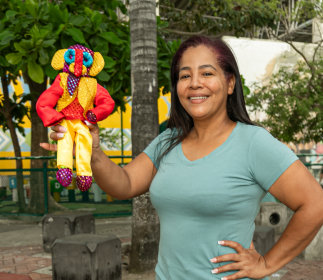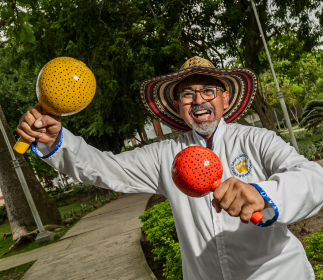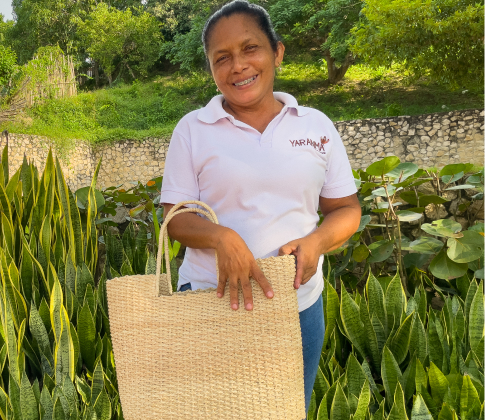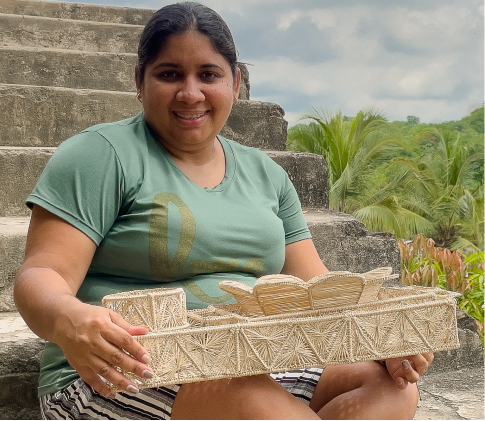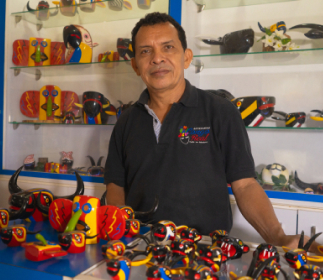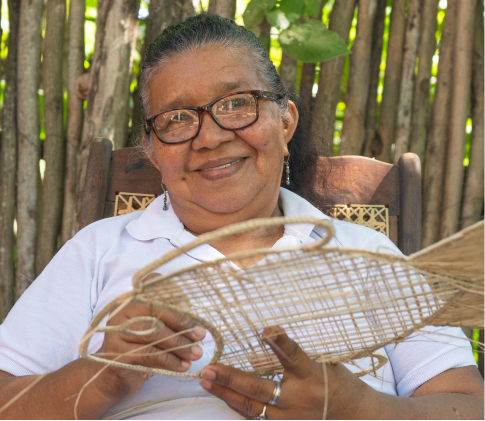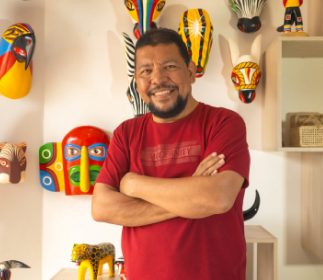Jesús Orellano
Workshop: Innovarte Caribe
Craft: Trabajos en madera
Trail: Atlantico Route
Location: Barranquilla, Atlántico
Participating in the oldest parade in Galapa, The Congo Grande parade, Jesús Orellano’s parents met. Dancing to the rhythm of drums and verses, jumping in joyful carnival circles, they fell in love. Before long, they moved in together, started a family, and continued dancing, year after year, in the same parade that brought them together, now accompanied by their children dressed as Congo dancers: black pants, sequined shirts, capes, turbans, and machetes in hand. Over time, his father switched from dancing to singing; he began composing the verses that spoke of the traditional Congo theme, rural life, work, streams, life, and death.
During one carnival year, his father met Francisco Padilla, owner of the El Tigre mask workshop. Padilla had been one of the first artisans to attend fairs with his carvings and was the founder of the apprentice school Jesús entered at fourteen. He would leave school at noon and head to Mr. Padilla’s workshop. There, he learned about wood, carving, and sanding, discovering that he had a knack for working with machetes, knives, gouges, and chisels. This skill was due to his rural heritage, the wisdom in using tools like the machete, shovel, and hoe. So Jesús decided to follow that path and opened his own workshop in ’90, always keeping in mind that artisans depend on their skills with tools, as dictated by the tradition of hand-carved masks from Galapa.
And if his parents’ love had blossomed during carnivals, his own marriage would also revolve around the Carnival. Together with Evelin Meriño, his wife, they specialized in carving carnival characters, animals, and birds. Evelin recalls that many years ago, each person would create their own mask, making it from papier-mâché or wood, and the dances would begin in families, with neighbors, cousins, and friends joining in. Over time, certain dances and their masks persisted, and those are the ones we know today as the most traditional, emerging from the lives of farmers and their daily routines, as well as the animals that surrounded them. That’s why there are wooden masks of the bull, jaguar, goat, donkey, and, in a modern twist, the zebra, which began to be used in the African Jungle dance of Galapa. And for that very reason, their family decided to create the birds series that now stands out.
All these masks are carved at Innovarte Caribe, but that’s not all. In addition to covering all Carnival characters and carving them in red ceiba and melina wood, they have developed a line of birds that began with the toucan, barranquero, and carriquí, and now includes more than fifteen species. They turn all these carnival and winged characters into napkin holders, earrings, butter dishes, keychains, pens, skewers, and, of course, masks. For such a varied and in-demand production, they have assembled their team: two carvers, two sanders, one cutter, one lathe operator, and two painters, all of them under the technical direction and guidance of Jesús, and with design and administration support from Evelin.
Craft
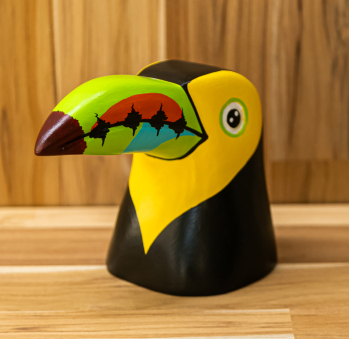
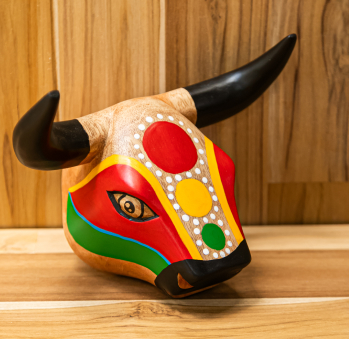
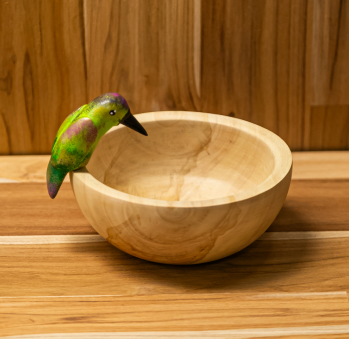
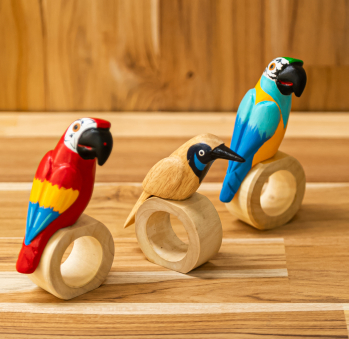
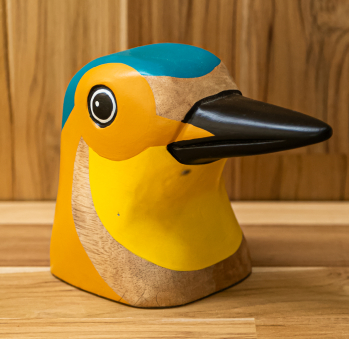
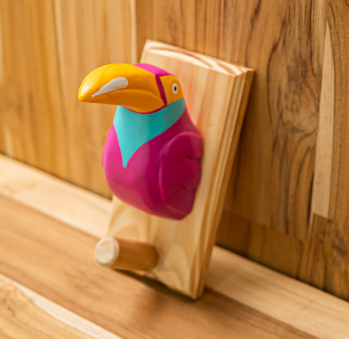






Artisans along the way
Artisans along the way
No puede copiar contenido de esta página

